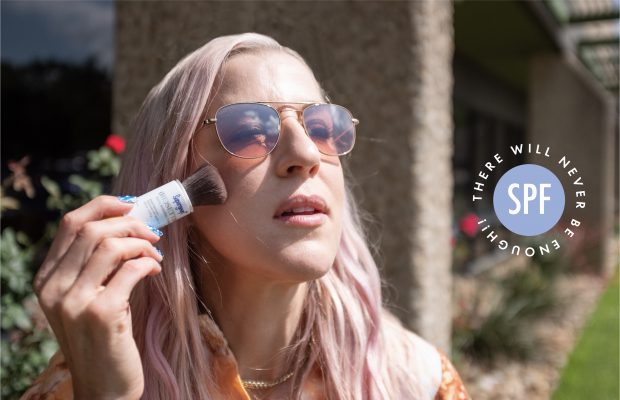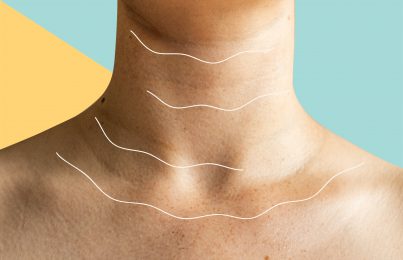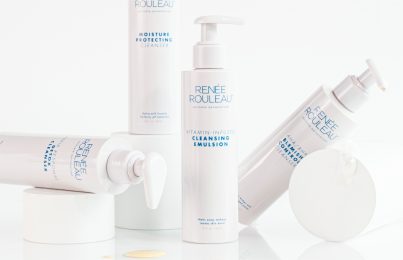Updated 06/19/23. When it comes to preventing visible signs of aging, there’s no better ingredient out there than SPF. The trick is applying your sunscreen correctly so that you’re actually getting the full protection it claims to offer. A big part of this includes reapplying throughout the day as your first application inevitably wears off.
- How Many Times a Day Do I Need to Reapply Sunscreen?
- What’s the Best Way to Reapply Sunscreen Over Makeup?
- 4 Ways to Reapply Sunscreen Over Makeup
- Which Method Is Best?
Reapplying sunscreen can be tricky, though—especially if you wear makeup. In this post, I’ll go over four different ways to reapply sunscreen over makeup and the pros and cons of each. Keep scrolling to find out which methods I recommend!
How Many Times a Day Do I Need to Reapply Sunscreen?
The answer to this question depends a lot on what your day looks like. If you’re spending your day outdoors (especially if you’re sweating or swimming), you must reapply every two hours.
Unless you work outside though, reapplying every two hours isn’t necessary (or, let’s face it, realistic). On a regular day, it’s mostly about using common sense and reapplying at times when you’ll be getting the most UV exposure. For most people, one to two reapplications should be enough. This could be right before you step out to take your lunch break or right before you go for a walk. Maybe it’s right before you get into your car to leave work and run errands. With that being said, if you sit right next to a window all day, you may want to add in one more reapplication since UV rays penetrate through windows.
Remember though, that the most important sunscreen application of the day is your first. Start with a strong foundation in the morning by applying the correct amount of sunscreen to your face and all other exposed areas of your skin.
What’s the Best Way to Reapply Sunscreen Over Makeup?
Okay, so let me start by saying this: there is no perfect way to reapply sunscreen over makeup. Sunscreen is tested by applying a specific amount of product to a certain centimeter square area of the skin. It’s applied evenly to clean skin and allowed to form a film before being evaluated and given an SPF number.
The nature of reapplication means you won’t be applying whichever product you use to clean skin, so there’s a good chance it won’t be able to form a protective film as well as it’s supposed to. All this to say, it’s really difficult to get the true SPF number indicated on a label when you’re applying something over makeup, other skincare products, and/or another layer of sunscreen. But, don’t despair! There are still some great options out there, and at the end of the day, extra protection is better than none.
4 Ways to Reapply Sunscreen Over Makeup
1. Reapply Using Your Hands or a Beauty Tool
The first option on the list is to reapply your regular sunscreen throughout the day using either your hands or a beauty tool, such as a brush or makeup sponge. The nice thing about this option is that you’re using a tried-and-true sunscreen product and you can evenly coat your skin. However, it can get a little messy and it can disrupt your makeup (especially if you’re wearing a full face), so that could mean you have to apply it sparingly in order to keep your makeup intact.
I’ve seen tons of articles recommending people use a Beautyblender (a popular makeup sponge) to reapply their sunscreen. If this works well for you, I say go for it. Just be sure to keep it clean and switch it out regularly to avoid introducing bacteria to your skin. Also, you need to realize that a sponge will absorb some of the product. Eventually, the saturation will max out and the product will be deposited onto your skin. However, this may be a bit of waste if your sunscreen is expensive.
Pros of This Method
- You’re using a tried-and-true SPF product.
- You can coat the skin well for even protection.
- It’s a good option if you only wear light makeup.
Cons of This Method
- It works best with tinted sunscreens. Untinted sunscreens (especially untinted physical sunscreens) may leave a cast or not blend well due to the use of pure zinc oxide or titanium dioxide.
- If you’re using a makeup sponge, it could soak up the sunscreen or pick up and smudge the makeup you’re already wearing.
- It can be cumbersome, messy, or inconvenient.
- Chemical sunscreen may not be able to form a proper film over your skin since you’re already wearing sunscreen and makeup.
2. Reapply Using a Cream Makeup Compact
Even if your makeup products aren’t marked as having SPF, they’re still giving you some amount of sun protection. This is thanks to the fact that titanium dioxide—an active mineral ingredient used in physical sunscreens— is used in almost all tinted makeup products. Of course, makeup isn’t a suitable replacement for actual sunscreen, but it adds a little bit of an insurance policy. I actually recommend that people wear makeup every day for this very reason!
If you do want guaranteed SPF, there are makeup compacts that offer just that, such as the Avene High Protection Tinted Compact SPF 50.
Pros of This Method
- Since it’s a makeup product, it will help keep your makeup intact.
- It’s fairly portable and mess-free.
- It’s good for someone who wears a full face of makeup and likes foundation.
- Since it contains a physical blocker (titanium dioxide), it doesn’t matter as much that you already have other products on your skin—the sun protection will still be effective.
Cons of This Method
- The applicator or sponge could get dirty and introduce bacteria to the skin.
- You need to apply an even coat for sun protection, which could provide heavier makeup coverage than some people want.
3. Reapply Using a Tinted Powder (That Contains Titanium Dioxide)
This is the method that I’ve personally used for years thanks to the ease of application. I love just being able to quickly and conveniently reapply a powder product as needed, then go about my day. Just like with cream makeup compacts, any makeup powder containing titanium dioxide will offer protection (even though it hasn’t been tested for it). You can also get makeup powders that have been proven to protect against UV rays, and as such, have been given an SPF number by the FDA. Both Colorescience and Supergoop make these, and I have personally used both.
Pros of This Method
- It’s easy, portable, and mess-free.
- It’s good for those with oily skin since it’s oil-absorbing.
- Powder particles are good at grabbing onto and coating the skin (which is essential for adequate sun protection).
- These powders are easy to apply to other body parts like the hands, neck, chest, and hair parts.
- Because it’s a physical blocker (titanium dioxide), it means it doesn’t matter as much that you already have other products on your skin—the sun protection will still be effective.
Cons of This Method
- You need a good amount of powder, which could look cakey on some complexions.
- It may not be ideal for those with dry skin.
- The shade ranges for powders with SPF can be limited.
4. Reapply Using a Spray or Mist
Sunscreen sprays and mists have definitely become more popular over the past few years as people pursue dewy-looking skin. If I’m being honest, though, this is my least favorite reapplication method, simply because it’s unlikely that it’s offering significant sun protection.
People underestimate how much of an SPF spray or mist is needed to get the protection that’s indicated on the bottle. Chances are it’s a lot more than you’ll be comfortable using from an aesthetic standpoint. In addition, it’s really critical that these spray sunscreens can form a film over the skin to be effective. This just isn’t possible when you’re spraying it over layers of other products that are already on the skin. Finally, you’re actually supposed to rub in sunscreen sprays or mists, which defeats the purpose of keeping makeup intact! While this certainly isn’t a glowing recommendation, I still encourage you to do it if it’s the only way you can stand to reapply SPF over makeup. Like I said before, some protection is better than none!
Pros of This Method
- It’s easy, portable, and mess-free.
- It doesn’t disrupt makeup very much.
- Sprays and mists are great for those who like a dewy look.
- Sprays and mists can easily be used on the body as well.
Cons of This Method
- A spray or aerosol delivery could cause irritation to the eyes, nose, and mouth.
- It can’t form a film over skin that has product on it, which means it won’t offer much sun protection.
Which Method Is Best?
The best method of sunscreen reapplication is the method you’ll actually use. As you can tell, reapplication is a tricky business, and none of these methods are perfect. The one that works best for you will depend on your skin type and how much or what kind of makeup you wear on a daily basis, so I encourage you to experiment a little and see what you like. At the end of the day, just be aware of the drawbacks of each so you can mitigate them as much as possible.
Next, check out the pros and cons of mineral vs physical sunscreen.
Celebrity Esthetician & Skincare Expert
As an esthetician trained in cosmetic chemistry, Renée Rouleau has spent 35 years researching skin, educating her audience, and building an award-winning line of products. Her hands-on experience as an esthetician and trusted skin care expert has created a real-world solution — products that are formulated for nine different types of skin so your face will get exactly what it needs to look and feel its best. Trusted by celebrities, editors, bloggers, and skincare obsessives around the globe, her vast real-world knowledge and constant research are why Marie Claire calls her “the most passionate skin practitioner we know.”



